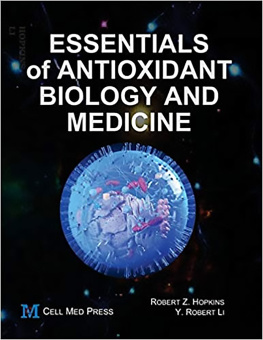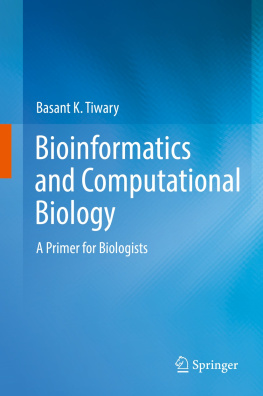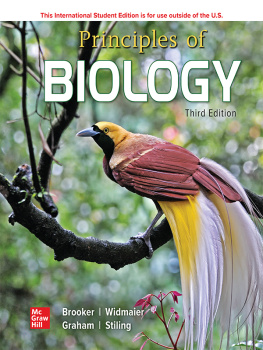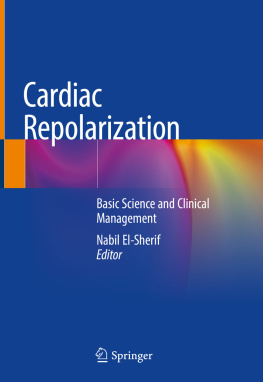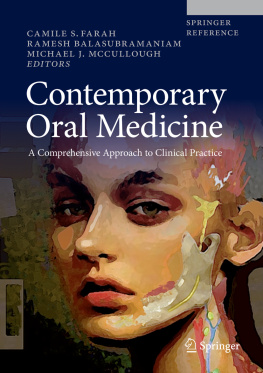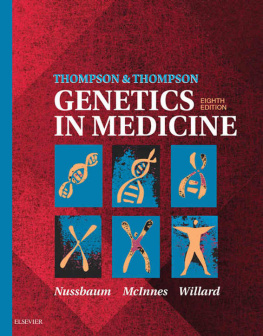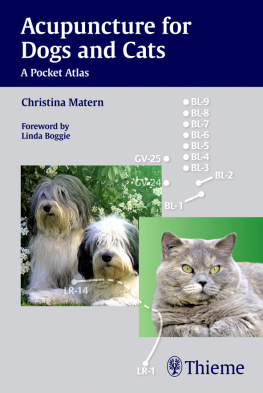ESSENTIALS OF ANTIOXIDANT BIOLOGY AND MEDICINE
ROBERT Z. HOPKINS
Y. ROBERT LI
CELL MED PRESS, AIMSCI Inc.
ESSENTIALS OF ANTIOXIDANT BIOLOGY AND MEDICINE
Copyright 2020 by Cell Med Press, AIMSCI, Inc.
All rights reserved. No part of this publication may be reproduced, distributed, or transmitted in any form or by any means, including photocopying, recording, or other electronic or mechanical methods, without the written permission from the Publisher. Requests to the Publisher for permission should be addressed to the Permissions Office, Cell Med Press, AIMSCI Inc., P.O. Box 37504, Raleigh, North Carolina 27626, USA.
E-mail: .
Disclaimer: Because of the rapidly evolving nature of the scientific field and biomedicine in particular, the information contained in this book is subject to change based on new scientific knowledge and clinical investigations. Although the authors and the Publisher have used their best efforts in preparing this book and checked with sources believed to be reliable and accurate at the time of publication, information included in the work may not be accurate in every respect due to the possibility of human errors and rapid changes in biomedical sciences. As such, the authors and the Publisher do not warrant that the information contained in the work is in every respect accurate and complete. The authors and the Publisher disclaim all responsibility for any errors or omissions or for the results obtained from the use of the information contained in the book. Neither the Publisher nor the authors assume any liability for any injuries or damages to persons or property from any use of the information contained in the book. The reader is advised to seek independent verification for any data, advice, or recommendations contained in the work.
Cover design: Ben D. Little
TABLE OF CONTENTS
PREFACE
Molecular oxygen is essential for aerobic life, yet incomplete reduction or excitation of molecular oxygen during aerobic metabolism leading to the inevitable formation of reactive oxygen species (ROS). ROS are double-edged swords, capable of performing physiological functions as well as causing damage to cellular constituents. As such, aerobic organisms, including mammals, have evolved a series of antioxidant enzymes to control ROS levels and maintain cellular redox homeostasis. Disruption of such redox homeostasis due to changes in either ROS or antioxidant enzymes or both would compromise mammalian physiology, contributing to disease development.
The past two to three decades have witnessed the remarkable advancements in our knowledge on ROS and antioxidant enzymes in biology and medicine. It has been increasingly recognized that ROS play an important role in diverse disease processes, including cardiovascular disorders, diabetes, neurodegeneration, and cancer, to name just a few. In line with this notion, accumulating evidence demonstrates the effectiveness of many antioxidant enzyme-based strategies for the intervention of an increasing number of disease processes that involve an oxidative stress mechanism. In this regard, based on knowledge learned from studying cellular antioxidant enzymes, many synthetic antioxidant enzyme mimetics have also been developed, which can be used to augment cellular antioxidant defenses to protect against oxidative stress-associated disease pathophysiology. On the other hand, antioxidant enzymes, like ROS, are also double-edge swords, contributing to certain disease pathophysiology. Hence, when developing antioxidant-based strategies for disease intervention or health promotion, the above notion must be taken into consideration. In this context, new knowledge on the biological functions of cellular antioxidant enzymes will further enhance our ability to develop more effective mechanistically based strategies to combat human diseases that involve a redox mechanism.
The rapid development of antioxidant research in biomedicine makes it imperative to clearly define the scope of antioxidant biology and medicine and emphasize the essence of this new scientific discipline. Accordingly, a concise book focusing on the fundamental principles and cutting-edge research discoveries as well as clinical and health impact of mammalian antioxidant systems would greatly facilitate both learning of the new knowledge and translation of the research discoveries into effective modalities for human disease intervention and health promotion. This notion has prompted the writing of the book Essentials of Antioxidant Biology and Medicine.
Essentials of Antioxidant Biology and Medicine takes a unique approach to integrating the fundamental principles with high quality research discoveries, and the basic bioscience with clinical medicine so as to provide the reader a comprehensive picture of the field in a concise manner. The aim of the book is to provide a critical evaluation of the various cellular antioxidant enzymes with an emphasis on their biological functions and potential impact on human health and disease. To this end, the book focuses on discussing solid scientific evidence obtained from novel basic research in mammalian systems as well as studies conducted directly in human subjects. The book is divided into four units with a total of 18 chapters covering essentially all of the major mammalian cellular antioxidant enzymes.
: Fundamental Principles
: Superoxide Dismutase and Catalase
: The Glutathione System
: The Thioredoxin System
: Other Antioxidant Enzymes
describes the overall strategies of antioxidant-based disease intervention and discusses several related concepts, including the multitasking function, genetics, as well as the double-edged-sword nature of antioxidant enzymes.
, covering superoxide dismutase (SOD) and catalase, respectively. Due to their roles in the sequential metabolism of superoxide to eventually form water, SOD and catalase, two classical antioxidant enzymes, are considered together under this unit.
). The glutathione system (consisting of multiple enzyme families) constitutes a chief antioxidant defense in mammalian systems.
Another major mammalian antioxidant systemthe thioredoxin system is discussed in , covering four families of antioxidant enzymes: thioredoxin, peroxiredoxin, thioredoxin reductase, and sulfiredoxin, respectively.
Several other antioxidant enzymes are discussed in , covering four additional families of antioxidant enzymes, i.e., methionine sulfoxide reductase, heme oxygenase, NAD(P)H:quinone oxidoreductase, and paraoxonase, respectively.
To help the reader study the various topics and retain new knowledge, each of the above 18 chapters begins with chapter highlights and is supplemented at the end with a list of self-assessment questions with answers and explanations. In addition, the book also includes a list of glossary commonly encountered in the field of antioxidant biology and medicine and an informative index.
It is noteworthy that peer-reviewed scholarly journals of high quality are instrumental in disseminating the innovative research findings so as to advance our scientific knowledge. In this context, the contents of this book are written primarily based on the original scientific findings published in highly influential peer-reviewed journals. Due to space limitations, the citation is primarily based on original and representative references.
It is hoped that this book, by integrating fundamental concepts with leading edge discoveries and translating essential bioscience into clinical medicine, will provide the reader a unique approach to understanding this rapidly evolving field of antioxidant biology and medicine. Because of the rapidly evolving nature of the field and biomedicine in general, the information contained in this book is subject to change based on new scientific knowledge and clinical investigations. Although the authors of the book have checked with sources believed to be reliable and accurate at the time of publication, information included in the book may not be accurate in every respect due to the possibility of human errors and rapid changes in biomedical sciences. As such, the authors of the book do not warrant that the information contained in the work is in every respect accurate and complete. The authors disclaim all responsibility for any errors or omissions or for the results obtained from the use of the information contained in this book. The reader is advised to seek independent verification for any data, advice, or recommendations contained in the work.
Next page
